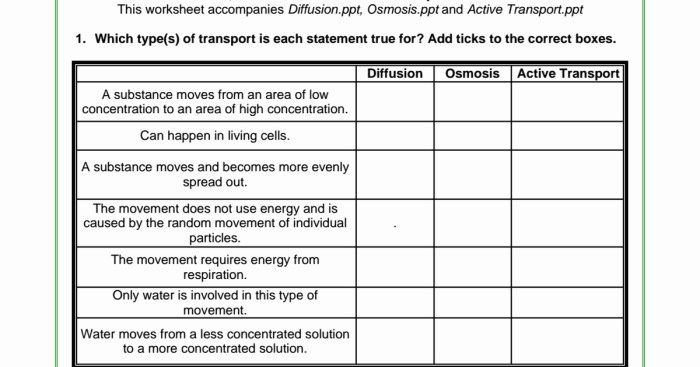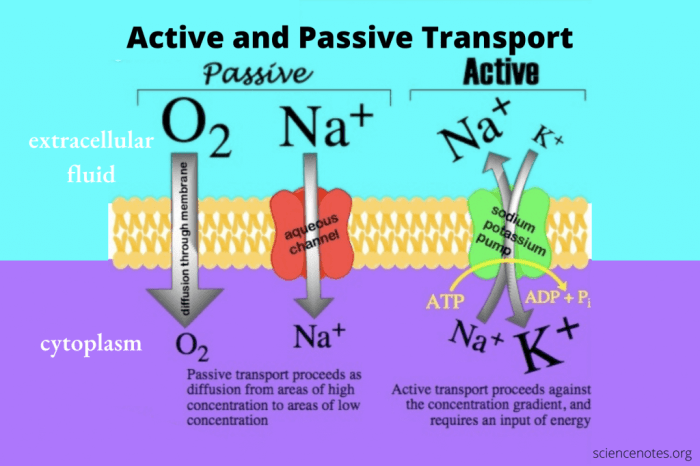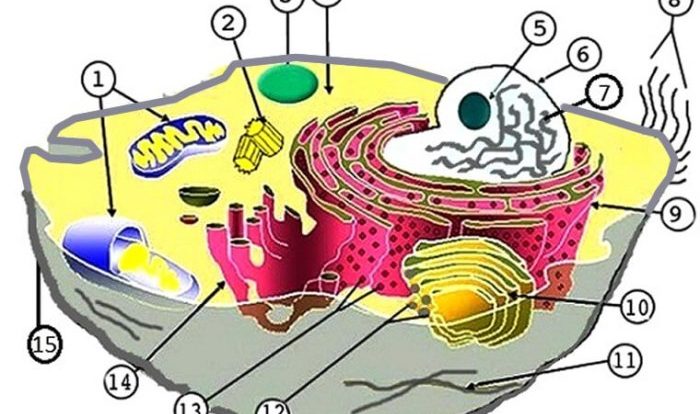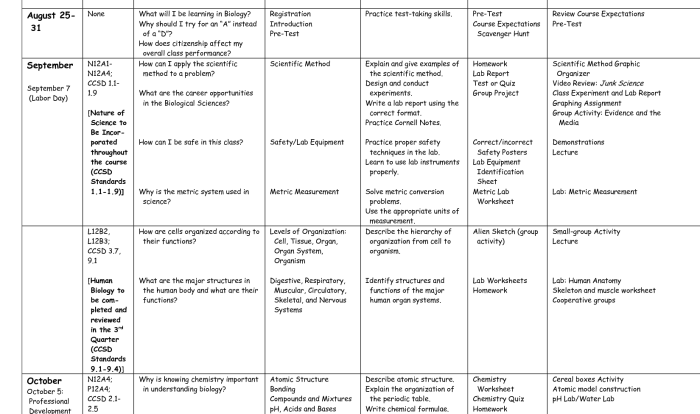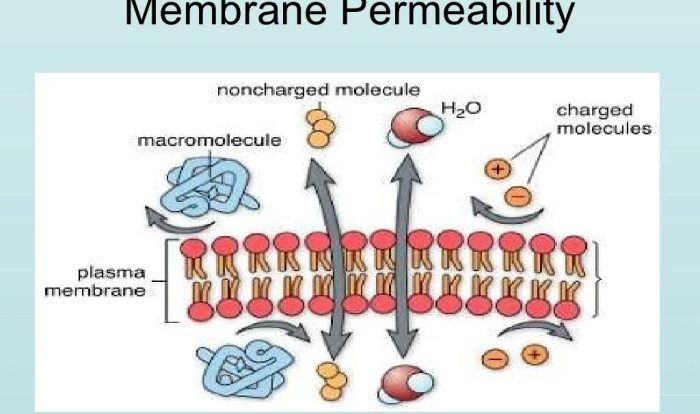The active & passive transport worksheet delves into the fascinating world of biological transport processes, exploring the fundamental mechanisms that govern the movement of molecules across cell membranes. This comprehensive guide unveils the intricate interplay between active and passive transport, highlighting their distinct characteristics, energy requirements, and vital roles in maintaining cellular homeostasis and diverse biological functions.
From the active transport of ions against concentration gradients to the passive diffusion of molecules down their gradients, this worksheet provides a thorough examination of these essential processes. Dive into the realm of carrier proteins, energy sources, and concentration gradients as we unravel the intricacies of biological transport.
Active and Passive Transport: Active & Passive Transport Worksheet
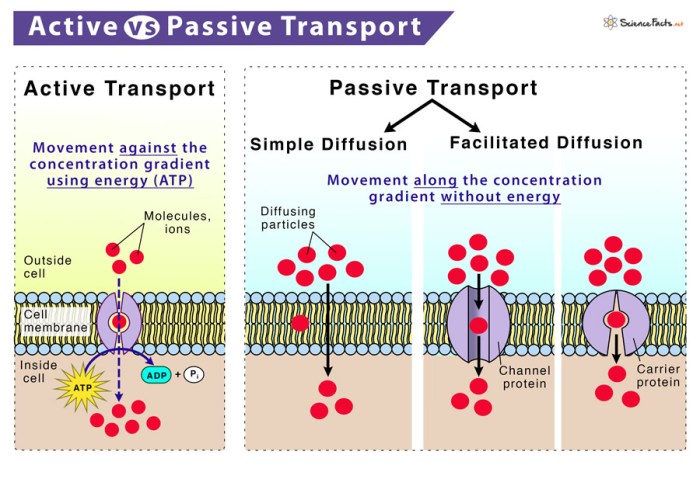
Biological systems rely on two fundamental transport processes: active transport and passive transport. These processes facilitate the movement of molecules and ions across biological membranes, maintaining cellular homeostasis and enabling various physiological functions.
The key difference between active and passive transport lies in their energy requirements and mechanisms. Active transport requires energy input to move molecules against their concentration gradient, while passive transport occurs spontaneously down a concentration gradient, without energy expenditure.
Active Transport
Active transport is an energy-dependent process that moves molecules from an area of low concentration to an area of high concentration. This uphill transport requires the involvement of carrier proteins embedded in the cell membrane.
Carrier proteins bind to specific molecules and undergo conformational changes, transporting them across the membrane. The energy for this process is typically derived from ATP hydrolysis.
Examples of active transport processes include:
- Sodium-potassium pump: Maintains the electrochemical gradient of sodium and potassium ions across the cell membrane.
- Calcium pump: Transports calcium ions out of the cytosol into extracellular spaces or intracellular organelles.
- Glucose transport: Facilitates the uptake of glucose into cells.
Active transport plays a crucial role in maintaining cellular homeostasis, regulating ion concentrations, and facilitating nutrient uptake.
Passive Transport
Passive transport is an energy-independent process that involves the movement of molecules down their concentration gradient. This spontaneous movement occurs from an area of high concentration to an area of low concentration.
Diffusion is the primary mechanism of passive transport. Molecules move randomly due to thermal energy, and this movement results in a net flow of molecules from areas of high concentration to areas of low concentration.
Types of passive transport include:
- Simple diffusion: The movement of small, nonpolar molecules across the lipid bilayer of the cell membrane.
- Facilitated diffusion: The movement of polar molecules or ions across the membrane with the assistance of carrier proteins.
- Osmosis: The movement of water across a semipermeable membrane from an area of low solute concentration to an area of high solute concentration.
Passive transport plays a vital role in nutrient acquisition, waste removal, and the maintenance of water balance in biological systems.
Comparison of Active and Passive Transport, Active & passive transport worksheet
| Characteristic | Active Transport | Passive Transport |
|---|---|---|
| Energy Requirement | Requires energy (ATP) | No energy required |
| Mechanism | Carrier proteins | Diffusion |
| Examples | Sodium-potassium pump, glucose transport | Simple diffusion, facilitated diffusion, osmosis |
| Biological Significance | Maintaining cellular homeostasis, nutrient uptake | Nutrient acquisition, waste removal, water balance |
Applications of Active and Passive Transport
The principles of active and passive transport have broad applications in various fields:
- Medicine:Drug delivery systems, targeted therapies
- Biotechnology:Bioseparation, membrane filtration
- Environmental Science:Water purification, wastewater treatment
Understanding the mechanisms and applications of active and passive transport is essential for comprehending the fundamental processes that govern biological systems.
Frequently Asked Questions
What is the key difference between active and passive transport?
Active transport requires energy to move molecules against their concentration gradient, while passive transport does not require energy and occurs down the concentration gradient.
Name two examples of active transport processes.
The sodium-potassium pump and the calcium pump are examples of active transport processes.
What is the role of concentration gradients in passive transport?
Concentration gradients provide the driving force for passive transport, causing molecules to move from areas of high concentration to areas of low concentration.
